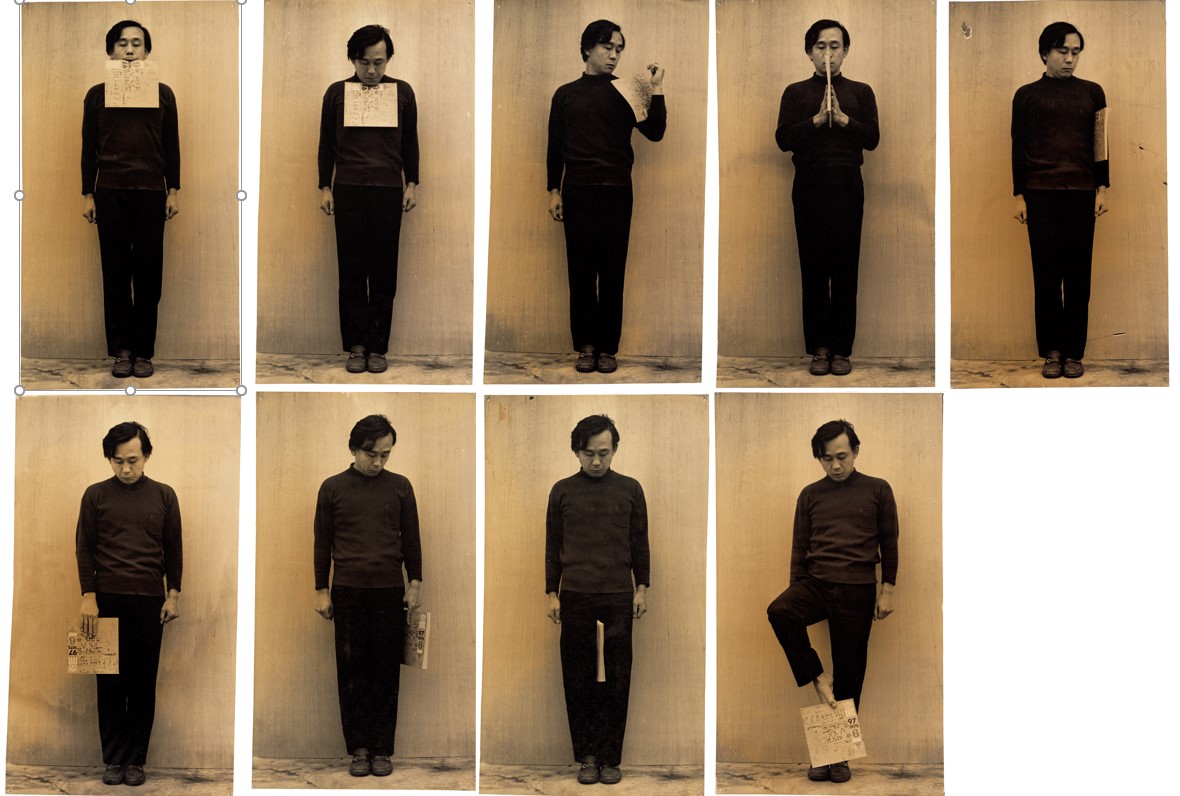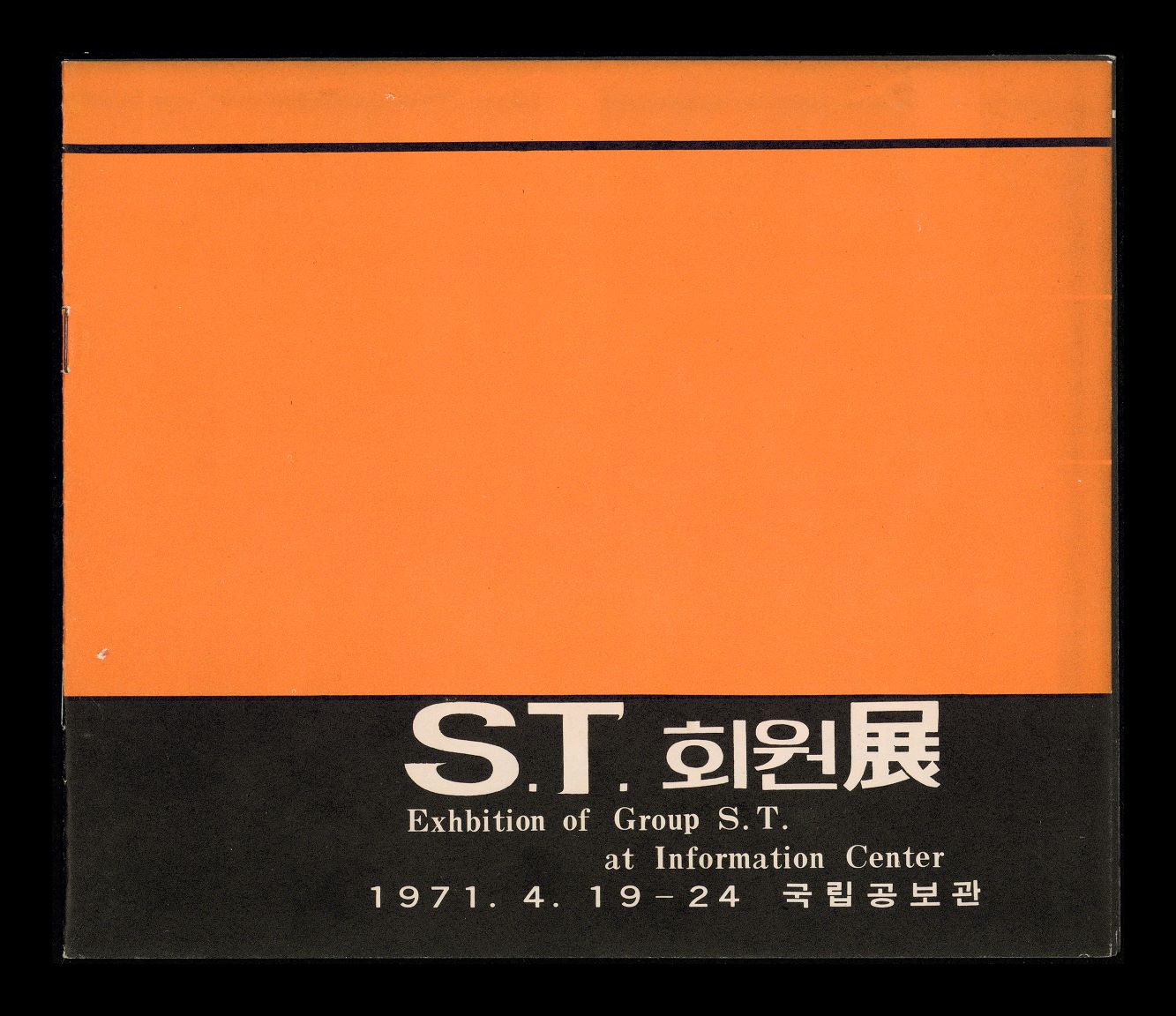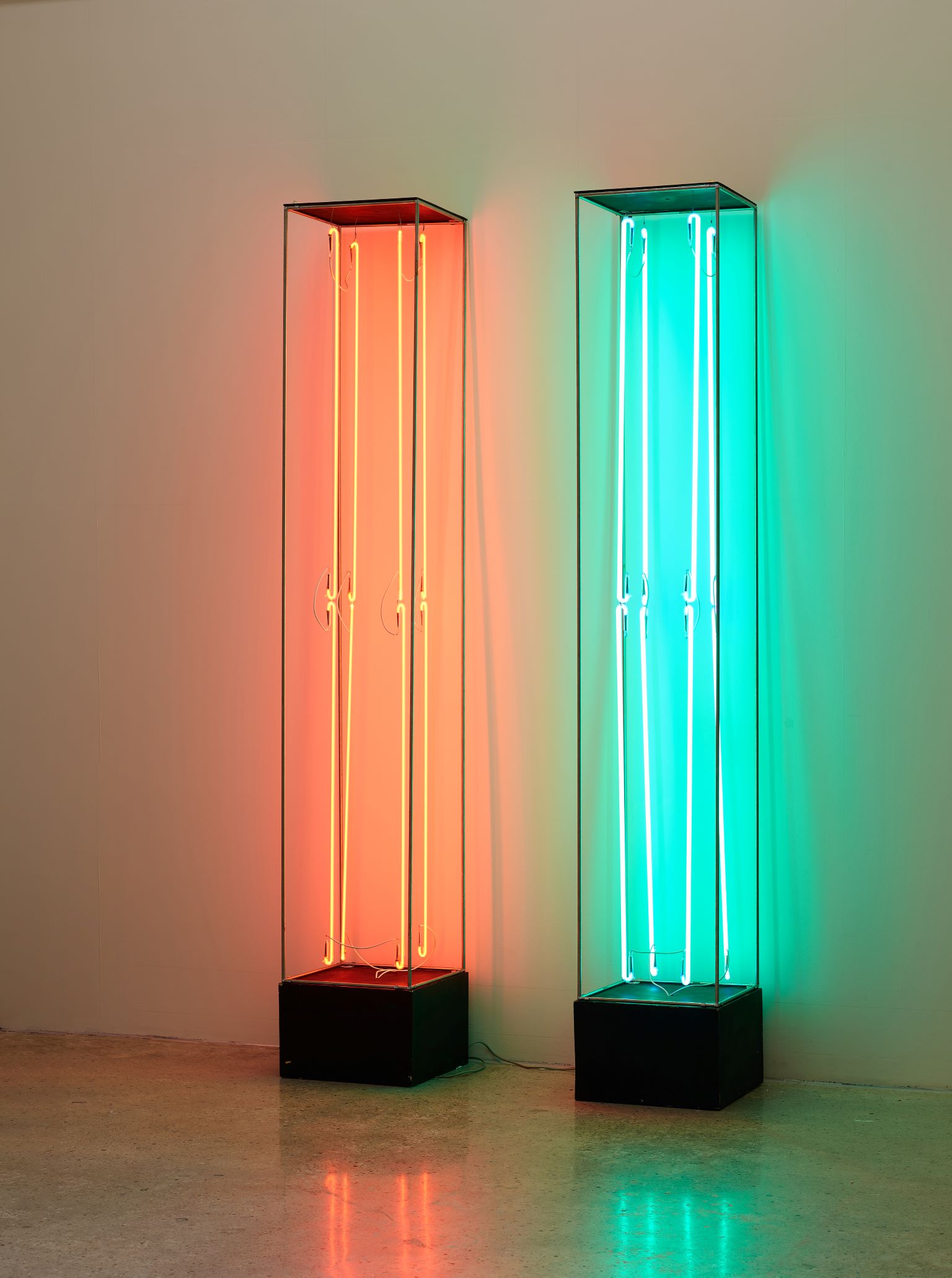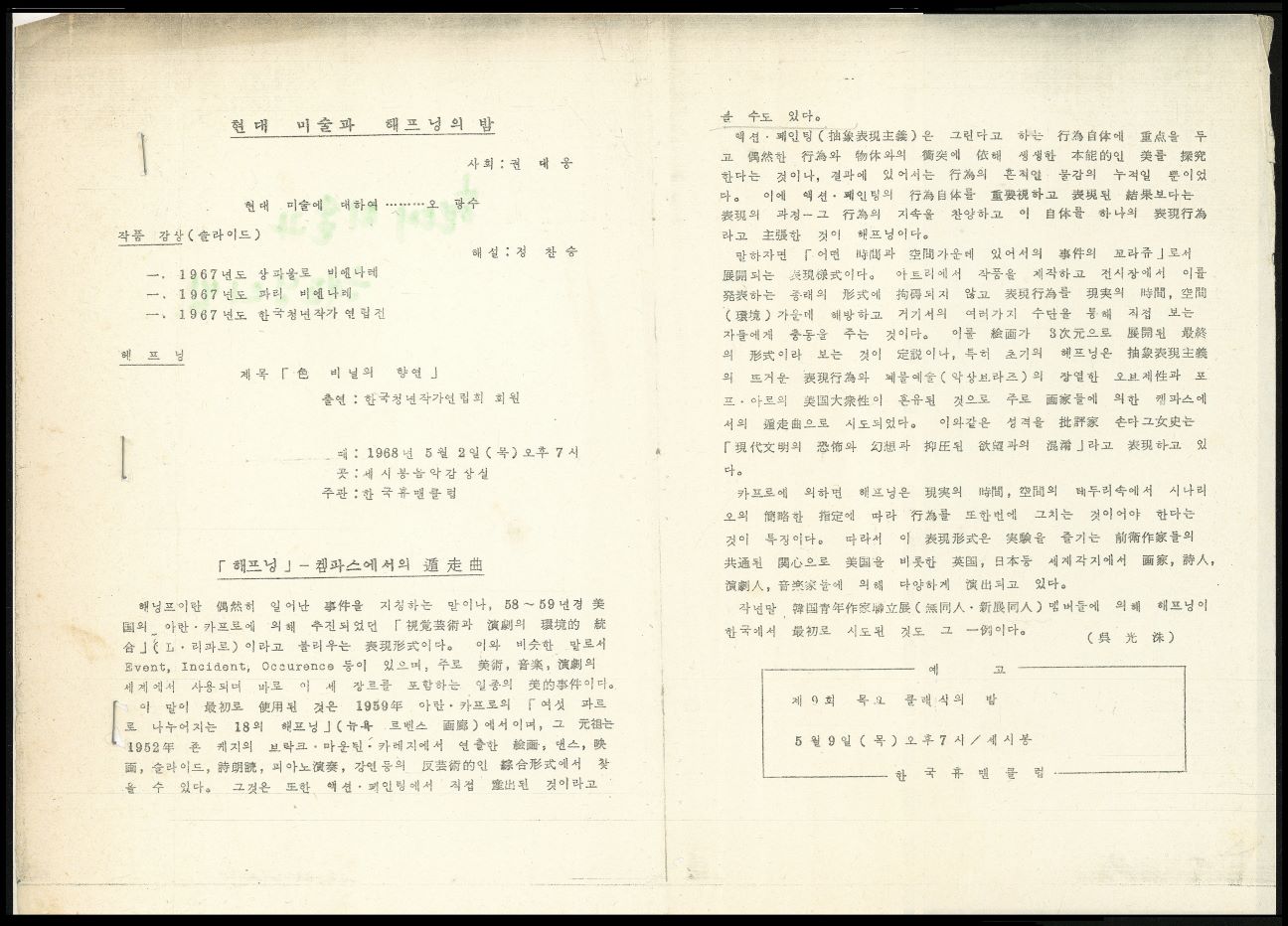
Three-Person Event Show, Invitation, 1975, MMCA Art Research Center Collection, Gift of Lee Kun-Yong
Three-Person Event Show
* Source: MMCA
Related
-

Performance Art
Performance Art refers to art that uses the human body and expressive body movements as an artistic medium. Since its first appearance in 1967, South Korean performance art has been called various terms such as “happening,” “event,” “performance art,” and “performance.” These various terms have resulted from performance art, a foreign art form, being redefined several times in South Korea in accordance with the conditions of a particular era. Therefore, each term implies the Korean peculiarity of a certain period. In particular, “haengyu misul (performance art)” was interpreted as a major experimental art trend in South Korea until the mid-1980s. In the late 1980s, as collaborative activities with other art genres accelerated, the term “haengyu yesul” or “performance” was actively used and replaced the previous term, “haengyu misul.”
-

Space and Time Group (ST)
An avant-garde art group that produced three-dimensional work and event. The group was active from 1971 to 1981. The name ST is an acronym for 'Space and Time.' The group not only held exhibitions, it also held research and discussion seminars on texts concerning conceptual art as well as peer critiques.
-

Event-Logical
Lee Kun-Yong, who was a member of the avant-garde art collective Space and Time Group (ST) in the 1970s, coined the term “event-logical,” to describe the key characteristic of his performance art which he referred to as an event. It is also the name of the event exhibition held on July 3, 1976 at the Seoul Press Center. After presenting an event for the first time at the ’75 Today’s Method Exhibition held at Baekrok Gallery in Seoul on April 19, 1975, Lee Kun-Yong presented another event at the Space Grand Prize Exhibition held at the National Museum of Modern Art (now MMCA) on August 27 of the same year, calling it a “logical event.” Lee later renamed it “event-logical” and used it as a term to refer to his performance artworks. “Event-logical” was defined by Lee as a pure act that exists within the art system and serves an artistic purpose in itself and as a logical artistic act that questions the meaning of the events comprising the world. Meanwhile, the exhibition Event-Logical featured the ST artists, Kim Yongmin, Lee Kun-Yong, and Sung Neungkyung. At the time, Lee presented Five Steps, The Logic of Hands, and The Logic of Place; Sung presented For 15 Seconds, Contraction and Expansion, and Reading the Newspaper, and Kim presented Marking and Erasing, Two Stones, and Mop. The photos of the artists’ events on the existing brochure of this exhibition were taken beforehand.
Find More
-

Experimental art
A genre of Korean art characterized by non-two-dimensional work such as sculpture, environmental installation and performance that emerged in the late 1960s and continued over the course of the 1970s. Art historian Kim Mikyung has analyzed the movement in the context of the political and social phenomena of the time and first coined the term experimental art to describe such work.
-

A Night of Contemporary Art and Happenings
A Night of Contemporary Art and Happenings was an art event held on May 2 in 1968 by all members of the Sinjeon Group and some members of the Zero Group, who presented happenings for the first time in Korea at the Union Exhibition of Korean Young Artists in December 1967. Before the Union Exhibition of Korean Young Artists, they formed a group called the Union of Korean Young Artists and held its first seminar on November 15 in 1967. Starting on February 19 in 1968 after the Exhibition, they devoted themselves to raising public interest in avant-garde art by holding lecture tours in local provinces. At A Night of Contemporary Art and Happenings, Chung Chanseung spoke about the trends of artworks in the Paris Biennale and the São Paulo Biennale held in 1967. Oh Kwang-su, an art critic who wrote a scenario for Happening with Vinyl Umbrella and Candles (1967), introduced in detail the art historical significance of Western action painting, happenings by Allan Kaprow, and the oeuvre of John Cage. In his essay “The Claim of Happening Art” written in 1968, Oh had already defined the happening as a form of expression seeking the environmental integration of visual art and theater, which was promoted by Kaprow in the late 1950s under the influence of American action painting and John Cage’s avant-garde music. As a result of publicity efforts by critics and young artists, the happening Transparent Balloon and Nude was staged at the C’est Si Bon music hall in the Gwanghwamun Gate area on May 30, 1968, soon after the event, “A Night of Contemporary Art and Happenings.” On October 12 of the same year, another happening, Murder at the Han Riverside, was presented by Kang Kukjin, Jung Kangja, and Chung Chanseung under the Second Hangang Bridge.






